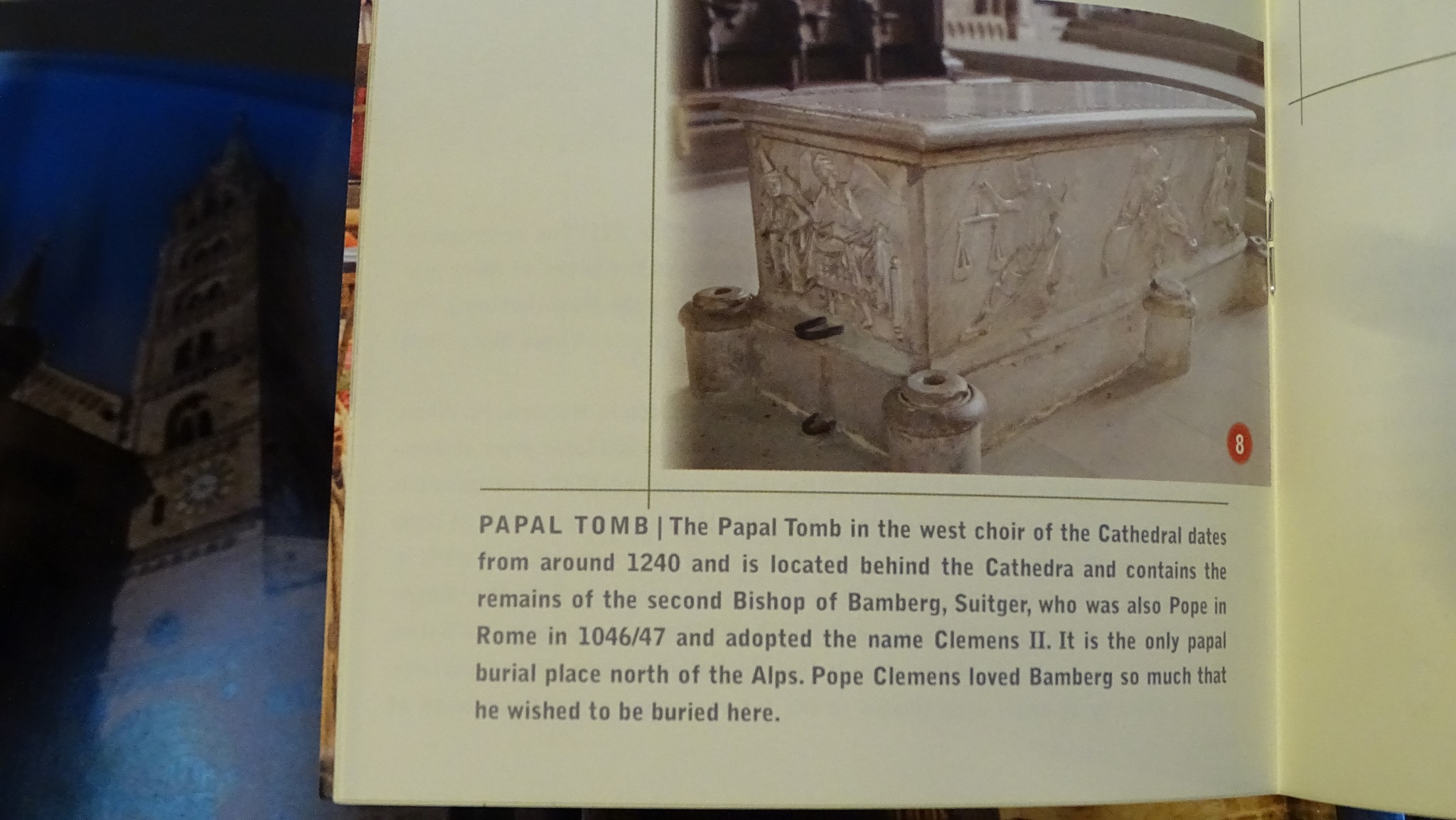[Worldtrippers home] [River Cruise home]

Today’s town, Bamberg, is situated on seven hills. Rome was also built on seven hills, which is why Emperor Heinrich II decided to make Bamberg the capital of the Holy Roman Empire in 1007.
Bamberg is also one of the few cities in Germany not destroyed by World War II bombing. (It was considered to have no strategic importance.) As a result, Bamberg today has a large landscape of well-preserved Medieval structures in its Old Town. The city is still laid out as it was in Medieval times; with Gothic, Baroque and Romanesque architecture.
After a morning of sailing and an early lunch, all guests spent a whopping five hours in Bamberg: the included hour-and-a-half “Bamberg Walking Tour” excursion, followed by several hours of free exploration and shopping.




When Bamberg became a capital, a new cathedral was built. The Imperial Cathedral contains the tomb of Pope Clement II, the only pope who is entombed north of the Alps. Another feature of the city is the Rathaus (Town Hall). Bamberg occupies both sides of the river, and the townspeople wanted a Town Hall that would serve both sides, so they constructed the Rathaus on an artificial island right in the middle of the river.










Bamberg is also famous for its rauchbier, or “smoke beer.” This refers to an ancient method of drying the brewer’s malt over an open flame. According to legend, a Bamberg brewer used malt that had been smoke-damaged in a fire, and the beer turned out to be unexpectedly popular. Today, authentic rauchbier is brewed only in this area.
Rauchbier is supposed to have a smell and taste like bacon, but no one in our party was too eager to try it. So instead, during our free time Gail and Cameron went to a local ice cream shop and enjoyed a “bubble waffel.”
As we leave Bamberg, we also leave the Main River. For the next few days, we will be transiting through the Rhine-Main-Danube Canal.


